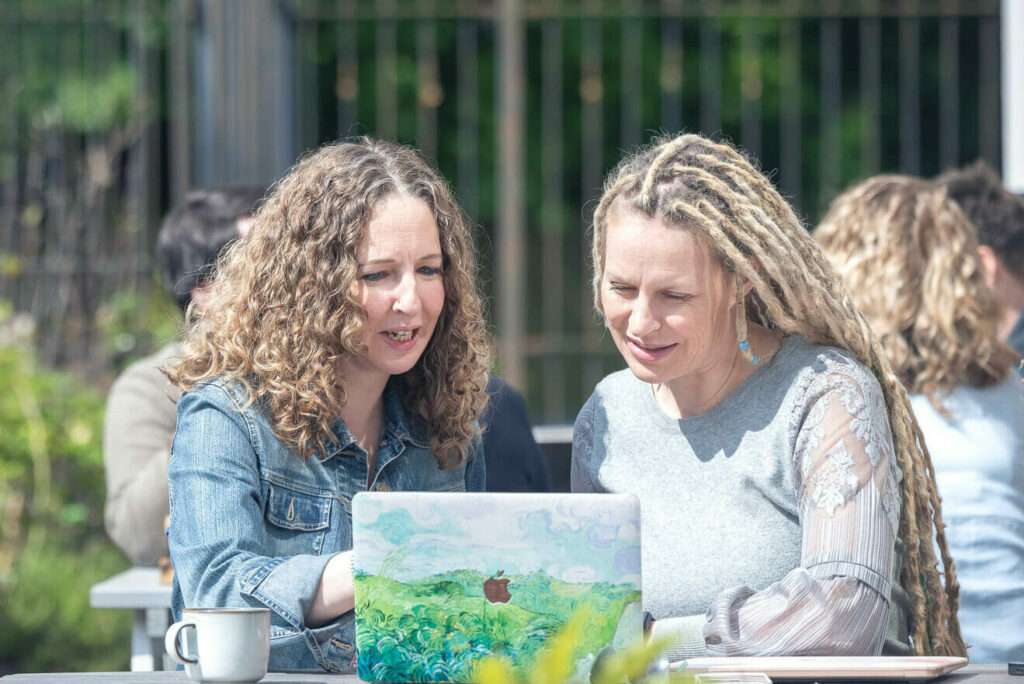

Why translating content into other languages isn’t as simple as you might think
Translating content into other languages has never been easier. You don’t even need a human translator. From Google Translate to Alexa, there are dozens of AI-powered tools promising to produce versions of your marketing and sales materials for consumption in any country you choose.
Except the reality is that if you give a piece of AI-translated content to a native speaker, you’ll soon find that there are problems. And not just with the language itself – the nuances, the colloquialisms, the most up-to-date expressions – but with what different cultures want and expect from that content.
We’ve been speaking to Anja Jones, founder and MD of fellow B Corp agency, AJT, about the importance of localisation and the benefits it offers to international businesses, from reaching new audiences and building brand trust to improving SEO and website conversions.
How would you define localisation?
Localisation, as the word suggests, is about adapting to a local market. Localisation goes way beyond translation in that it looks at the entire user/customer experience.
The aim of localisation is to build trust in prospective and existing clients. Trust is built more easily when things feel familiar. Just imagine yourself visiting a website from a company that’s based abroad. Being able to browse the website in English is already a huge help in accessing information – perhaps reading about a product and how it works, or understanding how the shipping works.
But beyond language, there are other things that might influence our buying decisions. The way a website is designed – is it laid out in a way that we’re familiar with? In Western Europe, websites tend to be ‘clean’ and minimalistic with plenty of white space, carefully placed images and small amounts of text. Compare that to websites in Asia, which are typically rather busy, densely packed with images and text.
Next, does the website offer payment methods that I’m familiar with? When you shop on a German website for example, you might find payment options British online shoppers are not really familiar with, such as SEPA Direct Debit and buying on invoice.
I believe we always need to come back to the purpose of the content we create, and what impact it needs to have on the reader, whether in the home market or abroad.
When it comes to written content, localisation is about adapting the translation to make it really relevant to the reader in the local market. This could be obvious things like converting currency and pricing from pound sterling to EUR; swapping out links so they lead to the localised version of your website, or swapping out external links (e.g. if referencing a study or particular piece of research) to make sure they’re really relevant to the local reader.
Localisation also means identifying which pieces of written content will be relevant and useful in a local market, and which ones don’t need to be localised at all. Instead of translating your entire library of blog articles, for example, it’s worth analysing which content pieces will be relevant in the local market. This involves carrying out multilingual keyword research to determine if there is any search volume for a particular topic before pushing the button on translation.

Wouldn’t it just be easier to write more internationally focused content that doesn’t need localisation?
Some say that when you create content that will be translated for an international audience, you should approach the content creation differently from the off. For example, you could use less hyper local references to make the translation process easier and faster.
On the flipside, others argue that professional translators are of course able to adapt cultural references and warn against watering down content to make it more easily palatable to everyone.
I can empathise with both sides of the argument but I believe we always need to come back to the purpose of the content we create, and what impact it needs to have on the reader, whether in the home market or abroad.
Localisation ensures that the content really lands well and has the desired impact. So the important thing is to be aware of cultural nuances and either build language capabilities and cultural sensitivities in-house or bring in an external partner who can bring that cultural understanding to your team.
If a company has taken the brave step of exporting, it’s vital to invest in language and localisation services to ensure the company enters the new market on the right foot.
Can you give us an example of how cultural differences might impact the way content needs to be written?
When you look at US marketing material, it tends to be very enthusiastic and upbeat, using plenty of superlatives and buzz words like amazing, great, fantastic and so on.
When we translate for a European audience, we often need to dial down that level of enthusiasm. Germans, for example, are well known for being quite analytical when making purchase decisions. Any marketing claims really need to be backed up. Facts and figures are reassuring, while overly enthusiastic rhetoric can come across as over the top and unbelievable.
This can and should influence the content creation process. Of course, you shouldn’t change your successful content formula for your English audience, just to make localisation easier. But knowing what German readers need means you can provide those facts and figures to the translation / localisation team so they can incorporate them into the localised copy.
This way you can truly adapt not just words and tone but go deeper and address cultural differences in behaviours and expectations.
Why should people consider using a human translation service?
Using professional translation services is about bringing that understanding of cultural nuances to your company. Anyone can run a text through Google Translate and provide a translation that may at best be a word-for-word translation of your original text or at worst an offensive, inaccurate or incoherent translation that could hinder growth in the local market – or even cause quite serious brand damage.
If a company has taken the brave step of exporting, it’s vital to invest in language and localisation services to ensure the company enters the new market on the right foot. Language and communication are so important in building trust in a new market, and cutting cost corners at the beginning of an export journey by not translating or by relying on free online tools, will only slow or hinder growth.
It may seem like a big investment at the start of an export journey but in our experience, it’s always more costly (not to mention more painful and time consuming) to fix bad translations than to invest in professional translation services from the start.

How does location and translation impact SEO keywords?
Keywords are hugely important for international SEO. Translating your content is crucial for aiding understanding and building trust. But you also need to use the right words and phrases in your translation to ensure your content shows up in search engine results when potential customers search for your type of products or services online.
Keyword research should be incorporated into the translation process from the start so that copy doesn’t just get translated but is keyword-optimised at the same time.
Let’s say you’re selling organic babygrows, and your English focus keyword is babygrow. In German, you can call a babygrow a Strampelanzug, or a Strampler. Strampelanzug is searched 590 times on average a month in Germany, whereas Strampler is searched 9,900 times. Choosing the most relevant keywords before starting with the actual translation can have a really positive impact on your international SEO.
What is the difference between translation and transcreation?
Transcreation is a specific term used for highly creative copy where a straight-forward translation might not work. A port-manteau of translation and creation, transcreation takes the key message of the source copy and creates something equally compelling for the target language.
It’s typically used for ad copy, headlines, slogans and other creative short form copy. In transcreation, linguists essentially have greater freedom to step away from words or sentences and really focus on the impact the text needs to have on the reader. What emotion it needs to elicit, what actions it should inspire the reader to take.
Creative copy often involves word play, which might use literary techniques such as rhyme, rhythm, alliteration, and so on. It might also draw on cultural references. You can’t easily translate these, they need to be recreated for each language.
Having said that, both translation and transcreation require creativity and cultural sensitivity to create localised copy that truly resonates with readers in the market.
For more about translation, transcreation and localisation, visit the hugely valuable AJT Insights blog, where you can read about everything from app translation to the difference between how Germans and Austrians speak, or download their whitepaper, The true cost of poor translation.










